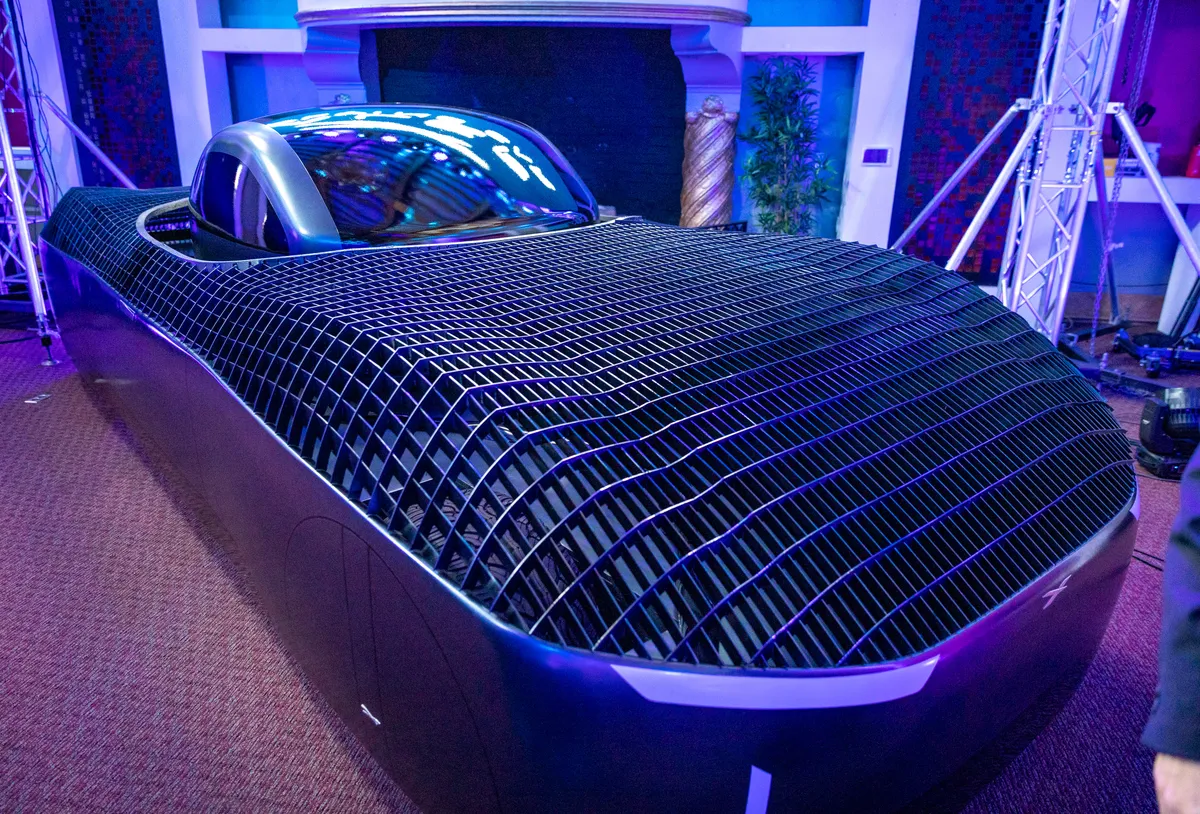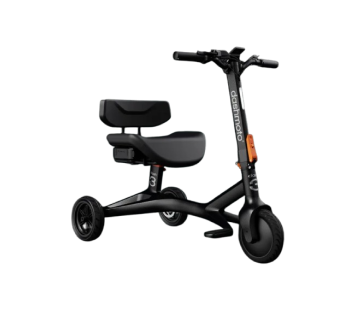Ever sat in bumper-to-bumper traffic and dreamt of soaring above it all? The idea of flying cars has captured our imaginations for decades, but they've always felt like something out of science fiction.
Well, get ready for a bit of a surprise. Thanks to a recent decision by the Federal Aviation Administration (FAA), the dream of personal flight has taken a major step closer to reality.
This article explores the first FAA-approved flying cars and what this exciting development might mean for our future commutes.
Table of Contents
What is FAA?
Before we discuss the technical details of flying cars, let's take a quick detour to understand the role of the FAA. Imagine the sky as a giant, three-dimensional highway. Just as cars need traffic rules and regulations to avoid collisions on the ground, airplanes need a system to navigate safely. That's where the Federal Aviation Administration (FAA) comes in.
Think of the FAA as the air traffic control for all civil aviation in the United States. They set the rules for pilots, airlines, and aircraft manufacturers, ensuring everyone follows the same safety playbook.
They also manage the National Airspace System, which is basically a network of air traffic control centers and navigational aids that keep airplanes separated and on course. So, in a nutshell, the FAA is the authority that keeps our skies safe and organized, making them a critical player in the world of flying vehicles – even the futuristic kind.
What flying car gets FAA approval?
So, which lucky flying car became the first to snag the FAA's approval? Cue the drumroll, please…it's the Alef Model A! This California-based innovation isn't just a pretty face (although, let's be honest, it does look pretty sleek). The Model A represents a significant leap forward in personal transportation.
Imagine a vehicle that can transform from a street-legal car to an airborne flyer. That's the magic of the Model A. This hybrid beast boasts vertical takeoff and landing (think helicopter-style) capabilities, eliminating the need for lengthy runways and making it even more practical for everyday use.
Now, it's important to manage expectations. The Model A isn't quite like zipping around in your everyday car and then magically sprouting wings. The FAA approval for the Alef Model A is only for testing purposes. This means the skies won't be flooded with flying cars just yet. The FAA wants to ensure the Model A is safe and reliable before giving it the green light for widespread use.
But here's the exciting part: this initial approval is a giant first step. It paves the way for further testing and development, bringing the dream of personal flight a significant step closer to reality. Alef Aeronautics, the company behind the Model A, envisions a future where these flying cars operate on designated air routes, offering a new way to navigate traffic-congested cities.
It's important to note that the Alef Model A isn't the only contender in the flying car race. Several other companies are developing similar vehicles, each with its own unique design and functionality. The FAA will likely play a central role in evaluating these contenders, ensuring they meet rigorous safety standards before hitting the skies.
So, while we might not be trading in our cars for flying machines just yet, the FAA's approval of the Alef Model A marks a turning point. The future of transportation is looking up, quite literally. Buckle up because the next decade could see a revolution in the way we travel, and the Alef Model A might just be the spark that ignites it.
FAA approved flying cars
The concept of flying cars has captivated our imagination for years, lingering as a futuristic fantasy. However, this dream has taken a monumental leap towards reality thanks to a recent decision by the Federal Aviation Administration (FAA). While widespread adoption might still be a ways off, the FAA's approval process has paved the way for the development and testing of these revolutionary vehicles. Let's dive into the details of the first FAA-approved flying car and explore what the future might hold for this exciting new mode of transportation.
The Alef Model A: A Street-Legal Transformer
The crown for the first FAA-approved flying car goes to the Alef Model A, a brainchild of California-based Alef Aeronautics. This isn't your average car; the Model A can transform from a street-legal car to an airborne flyer seamlessly. Imagine cruising down the highway and then taking off vertically when traffic gets unbearable, just like a helicopter. This eliminates the need for lengthy runways, making the Model A a more practical option for everyday use.

1. Model Overview and Price:
While pricing for commercially available models hasn't been finalized, Alef is currently accepting pre-orders for the Model A, which has an estimated price tag of around $300,000. It's important to remember that this is cutting-edge technology, and the initial cost reflects the vehicle's pioneering nature.
2. Key Features and Specifications:
- Dual Functionality: The Model A seamlessly transitions between driving on roads and flying through the air.
- Vertical Takeoff and Landing (VTOL): There is no need for runways—the Model A takes off and lands vertically, similar to a helicopter.
- Electric or Hydrogen Power: Choose between an electric or hydrogen powertrain for a more eco-friendly commute.
- Seating Capacity: The Model A comfortably accommodates two passengers.
- Range: In car mode, the Model A boasts a range of up to 200 miles on a single charge. For flying, the estimated range is around 110 miles.
- Street Legal: Model A meets all the requirements for driving on public roads.
Looking Beyond the Alef Model A: The Evolving Landscape of FAA-Approved Flying Cars
The Alef Model A is the first step in the exciting world of FAA-approved flying cars. Several other companies are vying for a place in this revolutionary market, each with unique designs and functionalities. Joby Aviation, for instance, is developing the eVTOL aircraft, a five-seater electric vertical takeoff and landing vehicle. Lilium Air, another major player, is working on the Lilium Jet, a fixed-wing electric vertical takeoff and landing aircraft.
The FAA will rigorously test and evaluate these contenders and the Alef Model A to ensure they meet strict safety standards before they receive final approval for widespread use.
The Price Tag of Tomorrow's Commute: FAA-Certified Flying Car Costs
With such groundbreaking technology, it's natural to wonder about the cost of FAA-approved flying cars. Early adopters can expect to pay a premium, as with any new invention. The Alef Model A, for example, carries a hefty price tag of around $300,000. However, as the technology matures and production scales up, the price will likely decrease over time.
The Future of Flight: A World of Possibilities
The FAA's approval of the Alef Model A marks a significant milestone in the evolution of personal transportation. Flying cars can revolutionize how we commute, potentially easing traffic congestion in urban areas and offering faster travel times. While widespread adoption might still be a few years down the road, the future of flying cars is looking bright. The coming years will undoubtedly see advancements in technology, affordability, and infrastructure, paving the way for a world where soaring above traffic jams might become a reality.
Importance of FAA approval for flying cars
The recent news of the Alef Model A receiving FAA approval (for testing purposes) might seem like a single company's achievement. But in reality, it's a giant leap forward for the entire flying car industry. Here's why FAA involvement is so crucial:
- Safety First: Imagine a sky crowded with unregulated flying cars! The FAA's role is to establish safety standards and regulations for these vehicles, just like they do for airplanes. This ensures that FAA-approved flying cars meet rigorous criteria, minimizing the risk of accidents and ensuring the safety of everyone in the air and on the ground.
- Setting the Stage for the Future: The Alef Model A paves the way for other companies to develop flying car prototypes. By establishing a framework for testing and approval, the FAA creates a roadmap for the safe and responsible integration of flying cars into our transportation system.
- Building Public Trust: Flying cars are a revolutionary concept, and public trust is essential for widespread adoption. The FAA's rigorous approval process assures potential users that these vehicles have undergone thorough safety checks. This can help overcome anxieties and encourage people to embrace this new mode of transportation.
- Standardization and Regulations: Without FAA involvement, the flying car industry could become a free-for-all, with different companies adhering to varying safety standards. This could lead to confusion and potential safety hazards. FAA-approved flying cars will ensure a level playing field, with all manufacturers adhering to the same safety protocols.
- Paving the Way for Affordability: While the current FAA-approved flying car (the Alef Model A) comes with a hefty price tag, the approval process itself is a crucial step toward making flying cars more accessible in the future. As technology advances and economies of scale kick in with more companies entering the market, the cost of FAA-certified flying cars will likely decrease over time.
The Bottom Line:
FAA approval may seem like a bureaucratic hurdle, but it's a vital step for ensuring flying cars' safe and responsible development. It fosters public trust, lays the groundwork for future regulations, and ultimately paves the way for a future where flying cars are a more affordable and accessible reality. While flying car prices might be astronomical right now, the Alef Model A's approval marks a significant turning point, and the future of transportation is definitely looking up, or rather, taking flight!
Conclusion
Remember that childhood dream of cruising through traffic in a flying car? Well, thanks to the FAA's recent decision, that dream just inched much closer to reality. This article explored the exciting world of FAA-approved flying cars, and let's just say the future of transportation is looking up – literally!
We delved into the details of the Alef Model A, the first car to snag the FAA's coveted approval (for testing purposes, of course). This isn't your average car; this sleek machine transforms from a street-legal cruiser to an airborne flyer, eliminating the need for runways and making it a contender for everyday use.
While the initial price tag might make your eyes water ($300,000!), it's important to remember that this is cutting-edge technology. As production ramps up, the cost is likely to come down in the future.
Now, everyone wants the question answered: When can we ditch our cars for flying machines? While widespread adoption might still be a few years away, the FAA's involvement is a giant leap forward.



